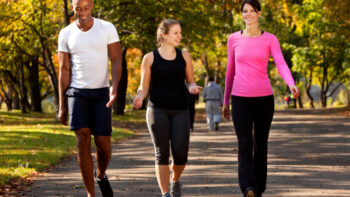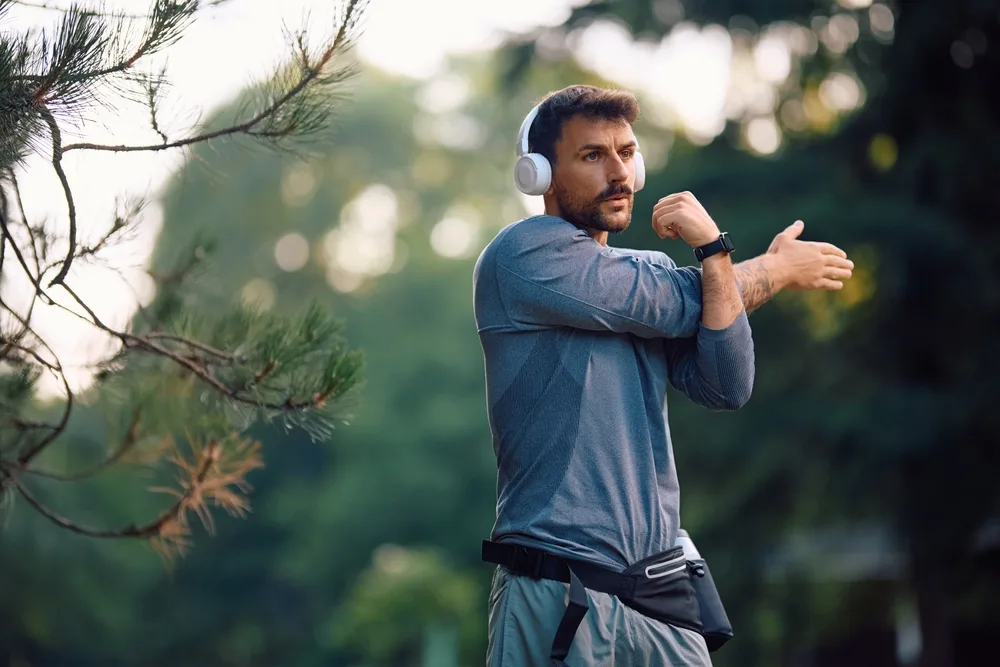
Walking has long been the go-to fitness activity for so many people who want to keep fit but don’t want the commitment that comes with gym memberships or dietary control. This is really not surprising since walking is something that anyone can do without any equipment, workout outfits, or a trip to the gym. Walking is also free. Want to lose weight but don’t have money to spare for workout equipment or a gym membership? You don’t need to worry about any of that if you keep your walking workouts simple, easy yet effective.
Walking can be a solitary or fun group activity. You can walk indoors when the weather is bad. Walking is also low-impact, which makes it a good workout if you don’t want to put too much pressure on your knees.
Walking comes with a myriad of health benefits aside from being a low-maintenance form of exercise. When done the right way, walking can do even more wonders for your health. Read on to know why walking is good for your physical and mental health and how you can do this the right way for maximum benefits.
1. Improved Circulation
Regular walking can help improve breathing and will improve the delivery of oxygen through the bloodstream. Improved circulation ensures that all parts of the body get the oxygen and nutrients they need for proper function. It also ensures proper elimination and deoxygenation, which is the transport of CO2 out of the body through the lungs.
Improved circulation also ensures that white blood cells which are the cells primarily tasked to handle infection precursors are delivered to the parts of the body that need them most. This translates to better immunity and overall better health.
2. Weight Loss
Walking has been found to be an effective activity if you want to lose weight and belly fat. Walking burns calories while preserving lean muscle weight. A high lean muscle weight ratio allows you to remain metabolically active even while you lose weight, which means you maintain your body’s ability to burn fat. Walking 1.6 km a day can burn about 100 calories, but you can improve this by brisk walking.
Brisk walkers can easily burn an average of 90 calories per mile of walking. The best thing is that you can easily increase the calories you burn by inserting little tweaks in your walking routines such as doing sprints or brisk walking on an incline. You can also vary your routes to keep your walks fun and interesting.
3. Improved Breathing
Walking improves breathing by increasing your lung capacity. In fact, a regular brisk 30-minute walk around the block can increase your lung capacity considerably, allowing you to breathe deeper and slower. This in turn helps improve your circulation.
4. Better Mood
Just like any other physical activity, walking is a relaxing activity that boosts the production of endorphins, hormones that play a role in lifting your mood. Endorphins reduce stress hormones and are known to help reverse the signs of depression.
5. Clarity
A mind that is relaxed and calm is a clear mind. Ever wonder why you find it easier to solve puzzles or answer difficult questions after a short walk outside? Many people find that taking a short walk during the day can help clear the mind.
Since walking boosts mood and induces a calm, relaxed state, you enter a state where your mind is clear and fresh, and better able to take on questions and puzzles that stumped you in the past. Scientists have actually studied the science behind this.
A study done by New Mexico Highlands University found that the impact of feet hitting the ground sends a wave upwards to through the body that is strong enough to send blood back upwards, increasing blood flow to the brain. Better brain oxygenation means that the brain stays clear and focused, as opposed to foggy and dull. Better brain oxygenation may even mean better protection against long-term cognitive decline.
6. Smoother Social Interactions
Walking with a buddy or with a group of friends can help strengthen social bonds, help prevent loneliness, and may even help keep anxiety and depression at bay. Done outdoors, walking can be a great way to socialize while getting beneficial Vitamin D during sunny days.
Walk the Right Way: How to Get the Most Out of Your Walking Exercise
Walking has its benefits but to get the maximum benefits, you have to walk the right way. Start by walking straight and tall. Keep the head up and the back long and straight but not taut. Avoid slouching or leaning forward by keeping your core firm and strong.
Feel your core become engaged as you take each step. Swing your arms and keep the shoulders relaxed. If you feel your shoulders becoming tight and taut as you walk, stop and perform a shrugging motion and rolling the shoulders back. Do this a few times until you feel your shoulders loosen up.
Walk in the right shoes. An hour or two of walking can be made comfortable with shoes that fit well. Your walking shoes should have good arch and heel support and feet cushions that absorb the shock of feet hitting the ground.
Make sure your shoes also have good ankle support especially if you want to alternate between walking and jogging. If you like to walk outdoors you can opt for the best walking shoes designed for outdoor walks. You can often find men’s hiking boots or hiking boots for women that are designed with good arch support for long outdoor walks in your local outdoor store.
Walking is one of the most physically and mentally rewarding things you can do for your mind and body. From the benefits of cardio to better mental clarity, the simple activity of putting one foot in front of the other is perhaps one of the easiest things you can do for your health.
You can do it anywhere, even indoors. If you have a walking machine or a walking treadmill you can get a good workout indoors when the weather is bad. On a time crunch? You can double the benefits of walking by doing sprints or by power walking. So put on those walking boots and start walking your way to a healthier lifestyle today.



